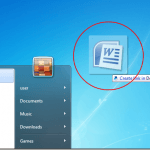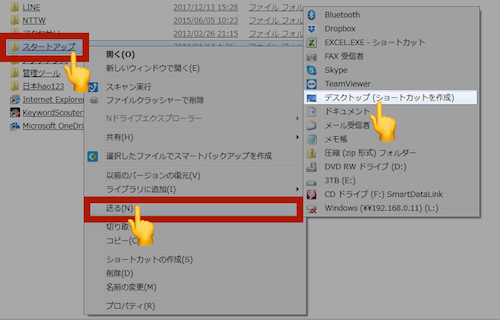

If you’d rather have a link on the Start Menu, first you need to go up one folder level. Now you have a Quick Access link to the Startup folder. The first is to use the Pin to Quick Access button: There are two easy ways to “bookmark” this folder. This folder is where you add or remove shortcuts to programs to make them run (or not run) at startup. That will show you the following folder, which is the Startup folder where some of your startup programs are launched automagically: To find the Startup folder, the quickest way is to do the following: Try the same trick to locate the Startup folder, and you get… nothing! All you had to do was click Start, and type “Startup”. That path will open the folder shown in the snapshot directly below.The Startup folder contains shortcuts to programs that run when you start up Windows.īack in the olden days of Windows 7, you could easily find the Startup folder. Users will need to replace USERNAME with their actual user account name, and then enter that path in File Explorer. There is also a second All Users Startup folder that should be located under: C:ProgramDataMicrosoftWindowsStart MenuProgramsStartupĪs you can see, the full path for the Startup folder is this: C:UsersUSERNAMEAppDataRoamingMicrosoftWindowsStartMenuProgramsStartup Open the Startup folder using File Explorerįor most users, the Startup folder is located at this address: C:UsersAppDataRoamingMicrosoftWindowsStartMenuProgramsStartup

In the text below you will find answers to all of these. Some users might wonder where is the Startup folder on their PC, how to open it and how to add or remove the software from it. How can I manage the Windows 10 Startup folder? The folder is buried within a series of subfolders and can be hard to find. The Startup folder is an in-built Windows feature (first introduced in Windows 95) that allows users to set up those particular apps and programs that will automatically run when Windows starts. All software and programs within that folder will run automatically when Windows starts. Yet, Windows 10 includes a Startup folder to which users can add programs and files. So, some users might look for startup settings on software windows to add new programs to the system startup. However, the Task Manager’s tab doesn’t include any options for users to add programs to the startup. That is Windows 10’s default startup manager with which users can disable startup software.

Windows 10’s Task Manager utility includes a Startup tab. Home › How to › Find the Startup folder in Windows 10


 0 kommentar(er)
0 kommentar(er)
